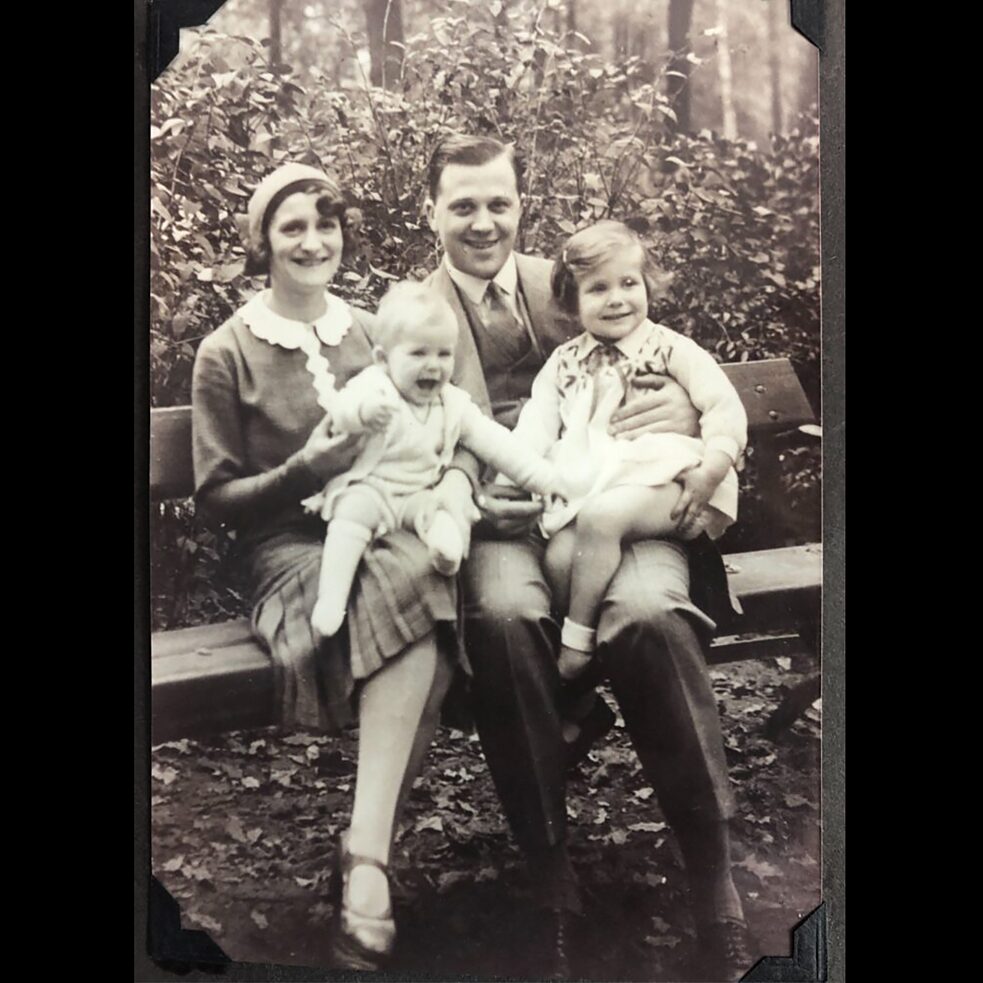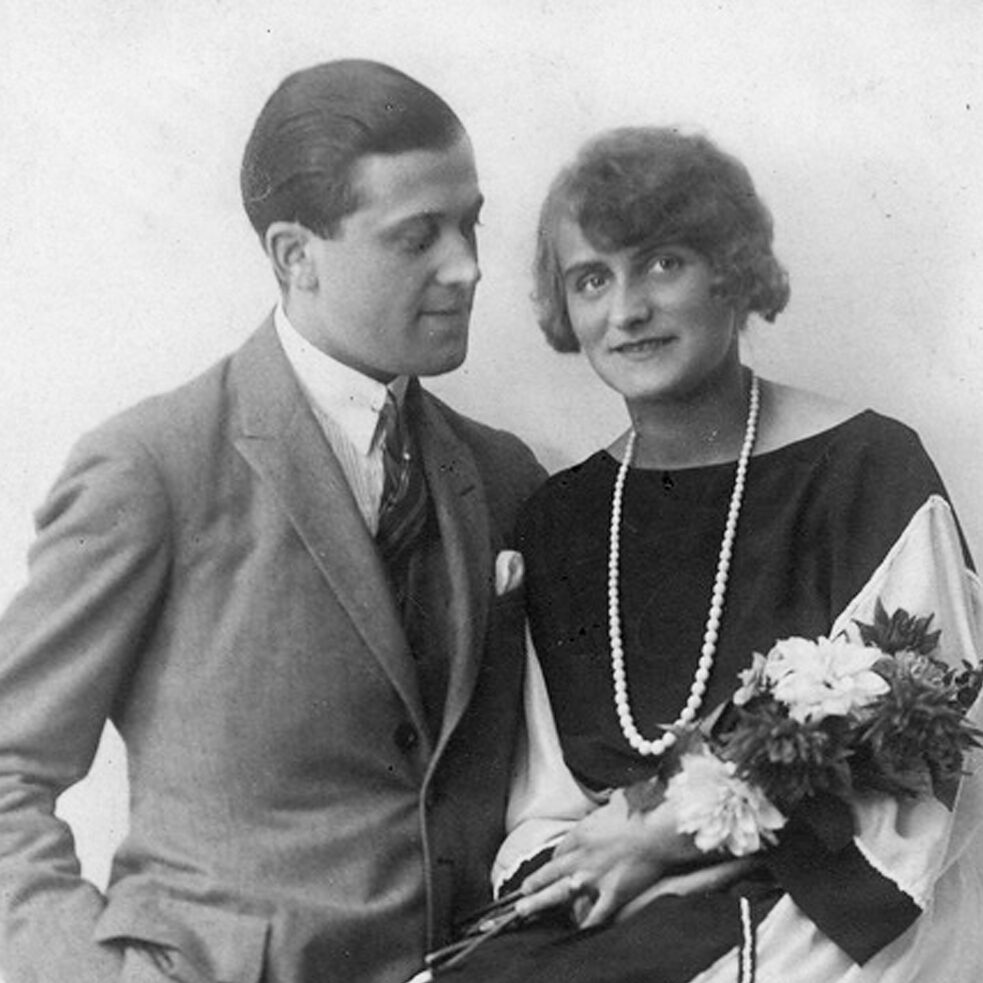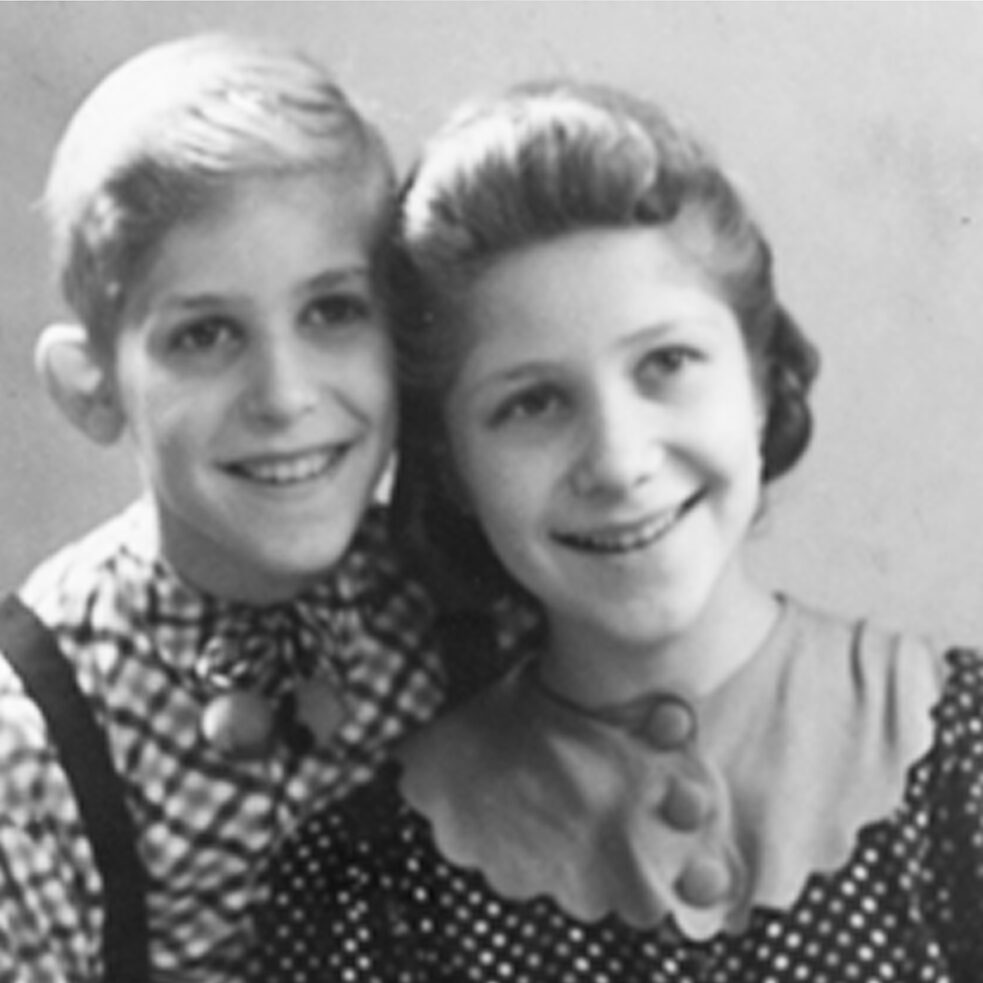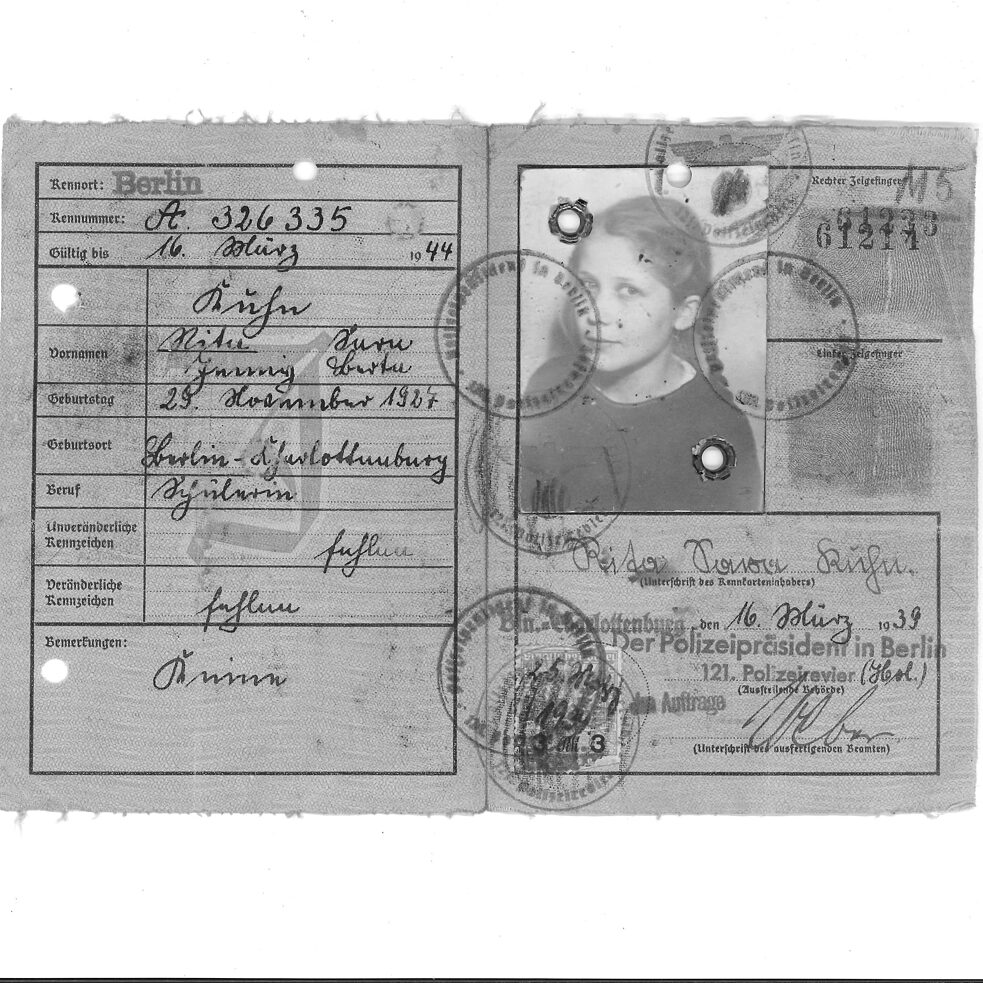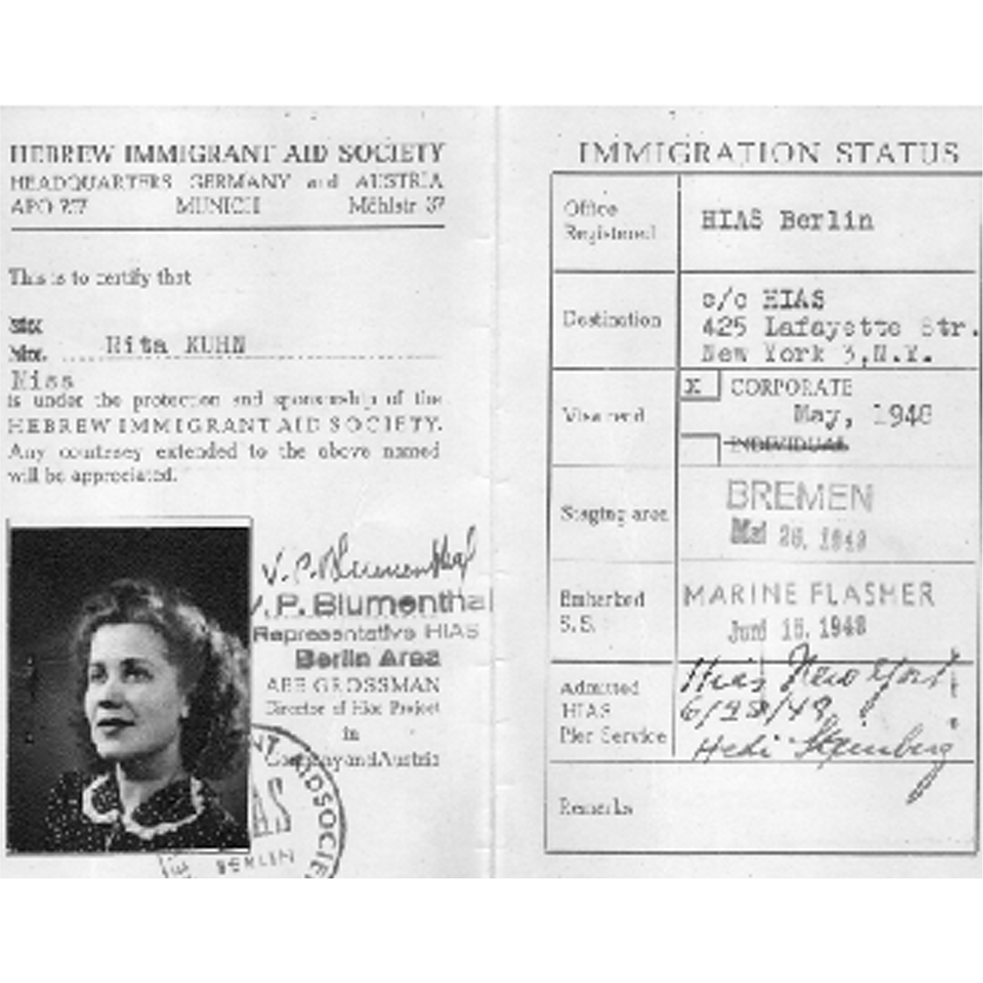Interview with Ruth Wiseman
“Do not be afraid to stand up against injustice”
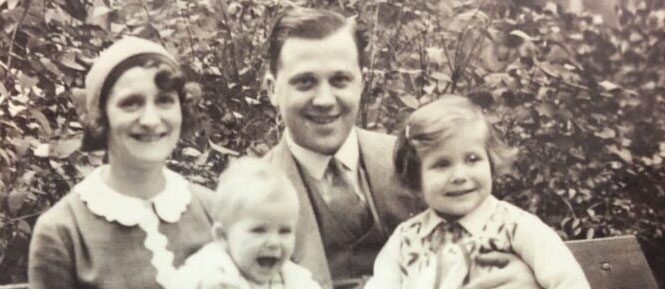
When Rita Kuhn was a teenager, the Nazi Party targeted her, her younger brother Hans, and her father Fritz because of their Jewish identity, arresting and detaining them in a building on Berlin’s Rosenstrasse. Thanks to the ensuing protest by their non-Jewish families, the Nazis soon released the arrested Jews. Rita’s daughter Ruth Wiseman shares her family’s experiences on Rosenstrasse.
By Savannah Beck
When did you learn about your family’s role in the Rosenstrasse Protest and their experiences under the Nazi regime in Germany? Did your mother speak openly with you about this time in her life?
I heard very little about my mother’s wartime experiences during my childhood. The one story I remember is of a bombing that took place very close to her residence, and the gruesome things she saw in its aftermath. My mother began speaking openly in the late 1980s when many survivors began telling their stories after the 40th anniversary of the end of the war. Her story and the impact of the Rosenstrasse Protest on her survival was a gradual realization for me as I grew older.
The first memory she had was her father telling her to be as invisible as possible when walking the streets of Berlin so as to not attract the attention of the “Brown Shirts.”
Another very early memory was going with her father to a Nazi parade to, as her father said, “See these scoundrels.” She recalled sitting on his shoulders as a five-year-old girl watching the parade march forward with its intimidating black, red, and white colors, the Nazi flag, the goose-stepping men. She saw Hitler himself that day. It’s possible it was the evening of January 30, 1933, when Adolf Hitler became chancellor of Germany. Unfortunately, I never asked her whether it was day or night.
She was fully aware of the growing danger and tension from five years old on. She developed a caution and fear of strangers that she carried with her for the rest of her life.
A testimonial from the Kuhn family recounts that Rita was separated from her father and brother at the Rosenstrasse building where they were imprisoned. During her time there, she heard about the protest occurring on the outside. How did those detained on Rosenstrasse react to this? Did the news that there was opposition to their arrests give them hope?
My mother only interacted with one woman with whom she was imprisoned in the room. There were other women there, but they were dejected and inaccessible. The woman told her details about the protest, how long it had been going on, how the voices increased in number and volume over the week, and conveyed a sense of hope and vindication for the Jews’ situation.
What was it like inside the detention center on Rosenstrasse?
She describes it in her memoir, “…the inside of the building was dark; a musty smell told me it had not been used or aired for some time... An orderly with a yellow star took me up a flight of stairs to a room on the second floor. “Stay here,” he said curtly in a tired voice, pointing to a straw mattress on the floor. The room was medium sized, lit by a bare bulb, which gave out a feeble light. The damp mattresses explained the odor which met me when I entered. I wanted to turn around but knew I could not. There was nothing else to sit on, so I sat down on the straw sack assigned to me. I could just make out the shape of three women lying on their mattresses opposite mine. One of them sat huddled in a corner to my left, and the other two near a window to my right. My arrival made little impression on them, no one moved and there was no exchange of greetings.”
Leading up to her arrest and following her release, Rita was assigned forced labor in factories and at a railway station. What did she tell you about this time? Were there other children working alongside her?
My mother was drafted into forced labor in December 1941, shortly after her 14th birthday. On June 11, 1942, she began work at a steel munitions factory called NIFE Stahlakkumalatoren on Nikolaistrasse in Berlin. There were many Jews working there, and she remembers that the factory manager was a sympathetic man of Swedish or Swiss nationality. He somehow made it clear that he was not supportive of the Nazi party. Nonetheless, he had no ability to prevent the SS from arresting all the Jewish workers on the morning of February 27, 1943. After her release from Rosenstrasse on March 6, 1943, she was then assigned to work for the Deutsche Reichsbahn on April 4, 1943. She, and a few other Jews, were assigned to clean the outside of the trains. These were trains that were traveling back from the East. The Polish forced laborers were assigned the work of cleaning the interiors, where sometimes they found cigarette stubs or small bits of stale food. The mood was congenial amongst the forced laborers, despite the hierarchical nature of their positions.
When the Soviet Army captured Berlin, the Russian soldiers that first made contact with Rita and her family did not believe that they were actually Jews. Could you tell me a bit about that encounter?
The story of my mother’s encounter with the Soviet soldiers has had a powerful influence on me. Her story of persecution and ridicule comes full circle in a deeply meaningful moment. As a backdrop, she recounted a terrifying experience she had of being cornered by young Nazi youth asking her to say something in that “Jew pig language.” She countered that it is called Hebrew, and she only knows prayers. They taunted her with threatening body language and said, “Say something in Hebrew pig language.” She said the Friday evening kiddush, and she said the Sh’ma*, our central declaration of faith in One God. They laughed and said, “It sounds just like a pig, oink oink.” She ran to her room after they let her go and prayed for God’s forgiveness for having used his name in vain.
Fast-forward to May 2, 1945, and my mother, her father, and brother have climbed the barricade on their street with all their official papers ready to show the soldiers. The soldiers approach in their tanks and get out upon seeing three lone figures atop the barricade. The young leader of the group, whose name is Sasha, she recalls, demands to know who they are. They give him their papers and show him their yellow stars. “Nein, nicht gut, Hitler macht die Juden kaputt,” he responds in broken German (English: “No, not good, Hitler made the Jews kaput.”). “Wir sind wirklich Juden!” (English: “Truly we are Jewish.”).
Sasha pauses, speaks with his men for a brief moment. When he turns back, he says, “Say the Sh’ma!” Immediately, my family says the Sh’ma in unison. They are saved. The Soviets believe them and are astounded that any Jews are left in Berlin. They explain how former Nazis are disguising themselves as Jews to escape imprisonment.
The Sh’ma, the last prayer on a dying Jew’s lips, the declaration of faithfulness to One God, Our God, has redeemed my mother from capture by the Soviets; it has been cleansed of the taunts that once brought her shame.
Do not be afraid to stand up against injustice, against evil, regardless of your gender, regardless of the government in power, and regardless of whether or not you hold a weapon, especially if you do not have a weapon. Love and truth will triumph.
Ruth Wiseman
The search for my Jewish identity began in 1985, upon hearing my mother’s story in full for the first time when she was a guest speaker at a Holocaust class during my freshman year of college. The class itself was emotionally overwhelming for me and seeing my mother in its context was doubly difficult. The full impact of the Holocaust and my mother’s story hit me hard during that semester. I had a very difficult time finishing the school year. I did finish but took time off from school, eventually going back to study international relations with an emphasis on the Cold War and the Russian language. I felt a pull and a sense of gratitude to “find Sasha,” so to speak. He was the good Soviet soldier who protected my 18-year-old mother from rape and harm. I spent a year in Moscow in 1992 and went to synagogue, for the first time in my life, to pray. I wept, realizing I was home. My journey was complicated and somewhat circuitous, but the deep recognition I had when I stood in that synagogue never left me. My association with being a Jew up until that point was that it is dangerous, it is something to hide, it is something we do not discuss. Fortunately and very, very slowly, that changed. In 1993, I could not understand how it is that the Jewish people persist, outliving every enemy, despite the horrors of centuries of pogroms and the Holocaust. After interviewing dozens of survivors, my search began in earnest, and I started to attend an Orthodox synagogue to learn the beautiful, positive, and deeply enriching aspects of being a Jew. I never turned back. I understand now what sustains us and how we survive as a people: It is through the beauty and the teachings of our Holy Torah and the mitzvot (Jewish religious duties) we are asked to fulfill.
What can society today learn from the women of Rosenstrasse?
I can only quote what Margaret Mead has already said: “Never doubt that a small group of thoughtful, committed citizens can change the world; indeed, it’s the only thing that ever has.”
Do not be afraid to stand up against injustice, against evil, regardless of your gender, regardless of the government in power, and regardless of whether or not you hold a weapon, especially if you do not have a weapon. Love and truth will triumph. Unfortunately, these women were among the few who had the courage to act upon their love and the truth of humane treatment in society.
Is there anything else you’d like to add about your family’s story?
Irit Felsen, a second-generation daughter, and a psychotherapist in New Jersey, spoke at a recent webinar for the Museum of Jewish Heritage. She quoted a psychotherapist under whom she was trained. He told her that survivors’ grief is not a pathological grief; it is the survivor’s way of holding on to the people they lost. It is a way to stay connected to all that was lost. I found this statement to be deeply comforting and somewhat liberating. My mother grieved all her life. In her younger years, she had much to distract her, but I was perennially aware of the sorrow just below the surface. Part of her was always far away, inaccessible to me. As she shared her story to younger generations, and as she aged, her grief really rose to the foreground. She suffered from dementia during the last years of her life. Grief became her primary emotion. That, coupled with a terrible fear of being alone, was a painful and difficult reality for her and for those living with her. Of course, there were moments of love and joy, but they were too often short-lived, and her tears would return — with war flashbacks and sometimes hallucinations of soldiers. When Ms. Felsen said what she did, something within me shifted. I went from feeling that my mother was a victim of her grief to understanding that she chose to feel her grief — as a way to honor the dead and to stay connected to them.
*Hear Israel, the Lord is our God, the Lord is One.
Savannah Beck, the editor at the Goethe-Institut Washington, conducted this interview.
